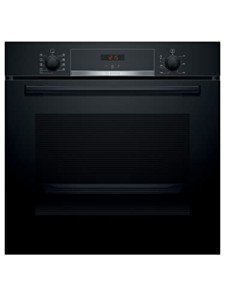
Black Shadows © 2013 -
Mentions légales/Policies
Mentions légales/Policies

The Rise of Built-In Ovens: A Seamless Approach to Modern Cooking
In modern kitchens, where design visual appeals mix flawlessly with functionality, one device sticks out as a true game changer: the built-in oven. As homeowners and chefs alike continue to look for ingenious options that improve their cooking experience, built-in ovens have actually become increasingly popular. This post checks out the benefits, considerations, and trends surrounding built-in ovens, highlighting why they are a vital feature in modern cooking spaces.
What is a built in ovens for sale-In fitted oven?
A built-in oven is a kitchen area device designed to be integrated into the kitchen cabinetry of a kitchen instead of standing alone. Unlike traditional freestanding ovens, which can be moved and placed anywhere, built-in ovens been available in numerous designs and sizes to fit specifically within designated spaces. Available in single or double setups, these ovens use a structured look that matches modern-day cooking area designs.
Advantages of built in range-In Ovens
1. Space-Saving Design
One of the most enticing benefits of built-in ovens is their space-saving style. By integrating the oven into kitchen cabinetry, you can maximize important counter and floor space. This is particularly beneficial in smaller sized kitchens, where maximizing space is important. Built-in ovens can be set up at eye level, making them more available and reducing the need to bend down.
2. Aesthetic Appeal
Built-in ovens add to a sleek and cohesive cooking area design. Available in different finishes– such as stainless-steel, black, white, and custom cabinetry– they can blend perfectly into the overall decoration. This visual appeal boosts the kitchen area’s visual harmony and raises the area, creating a contemporary and sophisticated environment.
3. Enhanced Functionality
Numerous built-in ovens come geared up with innovative cooking technologies, such as convection cooking, steam ovens, and smart functions. These enhancements enable for flexible cooking options, making it easier to accomplish professional-level results in your home. Smart built-in ovens can even link to Wi-Fi, enabling users to control the oven remotely, receive alerts, and access a range of cooking programs and recipes.
4. Enhanced Ventilation
Due to the fact that built-in ovens can be integrated with kitchen area hoods and ventilation systems, they can help keep much better air quality and lower cooking smells. This is especially significant for those who enjoy to prepare with fragrant spices and ingredients, as an efficient ventilation system can keep the cooking area comfortable and inviting.
5. Personalization Options
Built-in ovens offer a broad range of personalization options to fit individual cooking designs and requirements. From professional-grade home appliances with numerous cooking modes to compact styles for smaller kitchens, homeowners can pick the oven that fits their specific requirements. Many makers also offer adjustable front panels, enabling you to match the oven built in (http://psicolinguistica.letras.ufmg.br/wiki/index.php/A-Look-At-The-Ugly-Real-Truth-Of-Intergrated-Oven-f)’s look to your kitchen cabinetry for a really unified appearance.
Considerations When Choosing a Built-In Oven
While built-in ovens have many advantages, there are essential considerations to bear in mind before purchasing:
1. Cost
Built-in ovens generally include a higher price than their freestanding counterparts due to their style and installation requirements. It’s essential to consider both the cost of the oven and any additional costs related to cabinets modifications or installation.
2. Installation Requirements
Setting up a built in electric ovens-in oven often requires expert support, specifically if you require to modify existing kitchen cabinetry. Guarantee that you consider any costs related to installation, including labor and prospective kitchen cabinetry adjustments.
3. Size and Dimensions
Before buying a built-in oven, measure the designated area precisely to make sure a proper fit. Built-in ovens been available in different sizes and setups, so picking one that lines up with your requirements and cooking area design is crucial.
4. Lifestyle and Usage
Consider your cooking practices and needs when choosing a built-in oven. If you often host large gatherings, a double oven may be more helpful. On the other hand, if you have a compact kitchen, a single-wall oven might be enough.
Patterns in Built-In Ovens
The kitchen home appliance market is continuously progressing, and built-in ovens are not exempt from emerging trends. Some present patterns consist of:
Smart Technology Integration: With the increase of smart home innovation, built-in ovens now often include connection alternatives. This permits users to monitor cooking progress and adjust settings through mobile apps.
Energy Efficiency: As sustainability ends up being a top priority, lots of makers are purchasing energy-efficient built-in ovens that reduce energy usage while maintaining efficiency.
Multi-functional Designs: Built-in ovens now use features such as air frying, sluggish cooking, and steaming, offering versatility that meets a wide range of cooking methods.
 Conclusion
Conclusion
built in ovens for sale-in ovens certainly represent an ideal mix of style, function, and convenience in today’s cooking areas. As more property owners select this modern-day service, the focus shifts to creating a cooking space that is as aesthetically pleasing as it is useful. Whether you are building a brand-new home or renovating your cooking area, thinking about a built-in oven could raise your cooking experience and change your kitchen into a trendy and practical sanctuary. With a range of alternatives offered and continuous developments in technology, built-in ovens stay a standout choice for both newbie cooks and cooking enthusiasts alike.